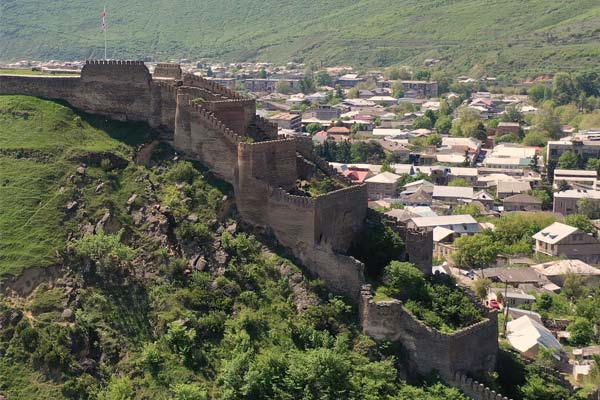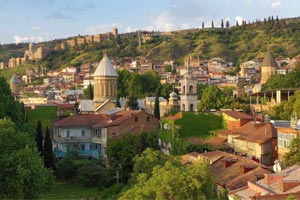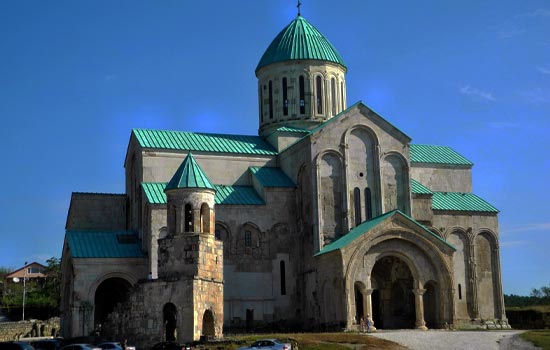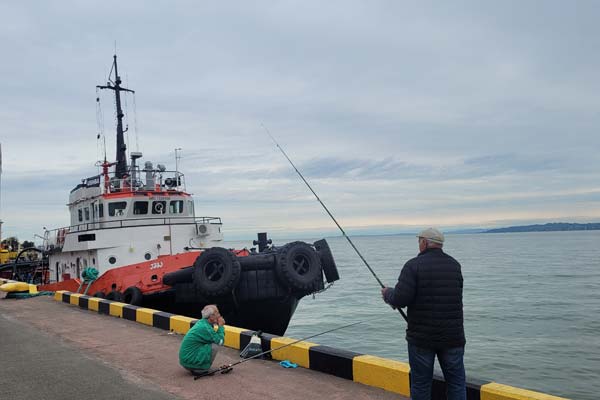|
Goristsikhe - Fortress of Gori The well-preserved fortress of Gori (Goris-Tsikhe in Georgian) is the historic centre of the city of Gori and the Shida Kartli region. Situated at the crossroads of several important roads, it has played a crucial role for the whole of eastern Georgia for several centuries. The name The name Gori means 'hill' and Tsikhe translates as 'fortress'. Goris Tsikhe literally means "fortress on the hill". Goristsikhe from Sky You can visit our YouTube channel and enjoy 4K footage of Goristsikhe History of Goris Tsikhe After a landslide in 1946, parts of the ancient fortress from the 1st millennium came to light, but Georgian chronicles do not mention Gori in writing until the 7th century AD. The fortress played a key strategic role and was at least as well defended as Georgia's capital, Tbilisi. The routes from the north to the south of Georgia and from the east to the west of Georgia met at the fortress. Goris-Tsikhe was also a kind of outpost for the capital Tbilisi. It is the largest fortress in eastern Georgia after Tbilisi, and whoever controlled Goris-Tsikhe controlled the entire Kartli region. From the 13th century, the fortress of Gori is mentioned several times in the Georgian chronicles, especially during and after the Mongol invasions, when Goris-Tsikhe was repeatedly the target of attacks by Ossetians from the North Caucasus. In the 16th century, the Persian Shah Tahmasp I invaded Georgia and captured the capital, Tbilisi. However, he was unable to overcome the Goris-Tsikhe wall and only managed to capture the fortress of Gori in his fourth and most brutal military campaign in the Caucasus. In the 17th century, after the Shah of Persia, Abbas I, had devastated eastern Georgia, his army was stationed for a long time in the fortress of Gori. His successor, King Rostom, was aware of the strategic importance of Gori Tsikhe and had it enlarged and the walls raised. King Rostom wanted to revive the economic life of the city. To this end, he invited many merchants and craftsmen to the city, who were also granted certain tax privileges. The 17th century French explorer Jean Chardin wrote that many rich merchants lived in Gori. The Italian missionary Teramo Castelli, a contemporary of Chardin, left several sketches of Georgia, including a drawing of Gori-Tsikhe. Today's fortress looks much as it did in his 17th century sketch. In the 18th century, during the reign of Irakli II, the fortress of Gori was once again in Georgian hands and Irakli II had the fortress rebuilt and a defensive canal dug around the complex. A document signed by King Irakli II states that the canal around the fortress had to be exactly 5 metres wide and 4 metres deep. The canal was filled with water diverted from the Liachwi River. At the beginning of the 19th century, after the annexation of Georgia by Russia, a Russian grenadier battalion was stationed at the Gori fortress. From the second half of the 19th century, Gori Tsikhe lost its military and strategic role and became a historical monument. In 1920, a strong earthquake in the Gori area destroyed many of the town's buildings. Goris Tsikhe was also badly affected and has not been rebuilt since. In 2006, the fortress of Gori was declared a 'cultural monument of national importance'. Since then, there has been a guard at the entrance to the fortress. However, it is open to the public and can be visited free of charge at any time. Architectural description of the fortress of Gori Goris-Tsikhe consists of two connected parts: 1. The first part is a citadel (180mx40m) standing on the upper plateau. The height of the wall is 1 to 3 metres from the inside, 10 metres from the outside, with an average width of 2 metres. 2. The second part is the so-called Zkhra-Kara complex ("Nine Doors" in English). Ckhra-Kara is located on the western side of the fortress and runs from the upper citadel almost all the way down to the street. The crenellated walls of Ckhra-Kara run parallel to each other about 15 metres apart and are closed at the lowest point by a circular crenellated wall. This part of the fort is divided into seven equal sections by stone walls, each with a gate. Several two- and three-storey defence towers are integrated into the wall for additional protection. The small church of Gori Fortress The church is located in the eastern part of the fortress and dates back to the 12th century. The church was largely destroyed in the earthquake and only fragments of the northern, southern and eastern walls remain. Secret tunnel and cistern There was a secret tunnel to the river from the western side of Gori Fortress, but it collapsed in the 1920 earthquake. However, the water reservoir in the fortress is still clearly visible today. Other monuments near Goris-Tsikhe Monument of Victory The bronze Monument of Victory stands on the western side of the fortress. The composition shows a young man sitting on a lion, holding a sword in his outstretched hand. The sword is entwined with vines. On the monument there is the famous sentence of the national poet Shota Rustaveli "Borotsa szlia Ketilman" - Evil is defeated by good. The monument was inaugurated in 1979 on the 26th of May, Georgia's Independence Day. The sculptor is Elgudscha Amaschukeli. The Monument to the Wounded Fighters Just below the fortress of Gori, on the northern side, stands the "Monument to the Georgian Heroes". The monument consists of eight severely wounded, partly torn warriors, depicted kneeling and sitting in a circle. The monument, also called "Requiem", was created between 1981 and 1985 by the sculptor Gogi Ochiauri. It first stood in Tbilisi's Vake Park and was moved to Gori in 2009.
from 1,690 EUR
|






